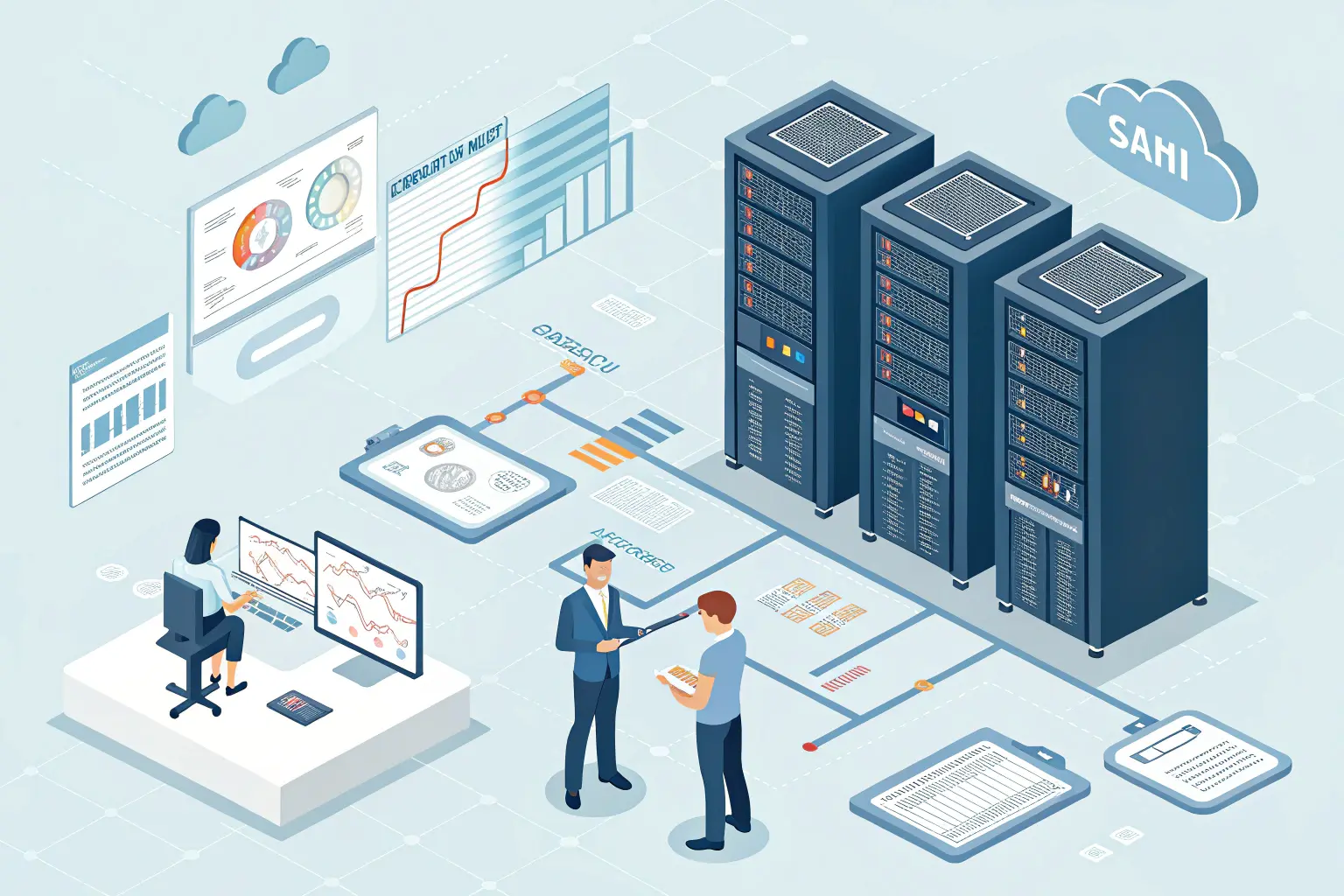This article outlines the scope, methodology, and results of the audit, highlighting the value delivered to the client and our unique approach to large-scale IT assessments.
Table of Contents
- Project Background
- Objectives of the Audit
- Scope of Work
- Key Findings
- Deliverables
- Client Impact
- Why Mediasapiens
Project Background
The client, a fintech company specializing in payment processing and B2B financial infrastructure, had been experiencing rapid growth. With expansion came increasing pressure on their IT systems, raising concerns about potential vulnerabilities, inefficiencies, and future scalability.
Mediasapiens was selected to perform an in-depth IT audit based on our extensive experience in infrastructure assessments, security evaluation, and regulatory compliance in the fintech domain.
Objectives of the Audit
-
Assess the current state of IT infrastructure, including data centers, servers, network architecture, and virtualization layers.
-
Identify risks, weaknesses, and performance bottlenecks.
-
Evaluate software architecture, backup systems, and disaster recovery readiness.
-
Measure compliance with international standards (ITIL, ISO/IEC 20000, TIA-942).
-
Provide a strategic roadmap for improving reliability, security, and scalability.
-
Define a 3–5 year infrastructure development strategy aligned with business growth.
Scope of Work
1. Data Center Engineering Infrastructure
-
Power Systems: We evaluated the resiliency of UPS systems, diesel generators, and energy distribution under peak load conditions. The infrastructure followed a partial N+1 redundancy model, which we flagged for review.
-
Cooling Systems: We inspected HVAC systems and thermal zoning effectiveness, identifying areas of potential thermal hotspots.
-
Monitoring & Alerts: Monitoring systems for temperature, humidity, and energy consumption were assessed. Several gaps in real-time alert configurations were found.
-
Physical Security: Video surveillance, access control systems, and perimeter defense were reviewed to ensure alignment with industry best practices.
-
Compliance Evaluation: Infrastructure alignment with TIA-942 and Uptime Institute standards was checked.
2. Network Infrastructure Analysis
-
Topology Review: We analyzed the current network topology, VLAN segmentation, redundancy protocols, and firewall configuration.
-
Hardware Inventory: The active network components (Cisco, Juniper) were inventoried, with aging equipment flagged for replacement.
-
Security Assessment: We tested the perimeter security, ACL configuration, and internal segmentation strategies.
-
Redundancy & Load Handling: The network was tested for resilience under high throughput scenarios.
3. Server & Virtualization Layer
-
Server Audit: Physical servers were cataloged, and lifecycle stages were documented. Performance under peak loads was analyzed.
-
Resource Utilization: Virtual machines and hypervisors were examined. Several clusters showed imbalanced load distributions.
-
Scalability Review: High Availability (HA) and Distributed Resource Scheduler (DRS) configurations were tested for failover efficiency.
-
Performance Bottlenecks: CPU and memory constraints in critical VMs were identified and addressed in the roadmap.
4. Backup and Disaster Recovery Systems
-
Architecture Audit: We evaluated the backup architecture, data retention policies, and disaster recovery playbooks.
-
Restoration Testing: Random restoration tests were performed to verify data recoverability within agreed RTO/RPO.
-
On-Site Storage Review: Physical backup storage systems were examined for security, environmental control, and redundancy.
5. Software Architecture & Application Security
-
Application Stack Review: The audit included inspection of core processing software, middleware, and support systems.
-
Licensing Compliance: We ensured all software was appropriately licensed and maintained according to vendor requirements.
-
Access Control: Policies around privileged access, credential storage, and role management were benchmarked.
6. Regulatory and Methodology Compliance
-
Standards Assessment: The client’s IT operations were mapped against ISO/IEC 20000 and ITIL standards.
-
Disaster Recovery Planning (DRP): DRP documentation was reviewed for completeness, testing frequency, and business alignment.
-
Change Management & Risk: Procedures for change implementation, rollback, and risk mitigation were analyzed.
-
Business Continuity: Business continuity planning was assessed in the context of data integrity and operational uptime.

Key Findings
Strengths:
-
Modern virtualization environment with VMware clusters.
-
Well-segmented network architecture with initial redundancy measures.
-
Commitment to regular backup cycles.
Weaknesses & Risks:
-
Gaps in HA/DR configurations and imbalance in VM loads.
-
Aging network hardware at risk of failure.
-
Incomplete DRP documentation and irregular restoration testing.
-
Thermal inefficiencies in parts of the data center.
-
Lack of automated escalation in incident response workflows.
Deliverables
Mediasapiens provided a 100+ page final report including:
-
Detailed assessment results with visual infrastructure diagrams.
-
Risk heat maps and maturity scores for each domain.
-
A prioritized roadmap broken down into:
-
Critical fixes (0–3 months)
-
Structural improvements (3–12 months)
-
Strategic initiatives (1–5 years)
-
-
Strategy for IT infrastructure evolution aligned with growth forecasts.
Client Impact
After implementing the recommendations from our audit, the client reported:
-
20% improvement in resource efficiency through server consolidation.
-
30% reduction in downtime from improved failover systems.
-
Increased investor confidence due to compliance visibility.
-
Stronger internal governance through documentation and access controls.
-
Better preparedness for ISO/IEC and PCI DSS certification.
Why Mediasapiens
-
Mediasapiens combines technical depth with business foresight. Our IT audit methodology is built on:
-
15+ years of hands-on expertise across fintech and healthcare sectors.
-
Certified professionals in VMware, Cisco, ISO/IEC, and DRP/BCP disciplines.
-
Proven track record with scalable solutions tailored to fast-growing companies.
-
Total independence: we do not sell hardware or software, ensuring impartial evaluation.
For fintech companies, a robust IT foundation is essential to scale securely and comply with strict industry regulations. Our work with this processing client demonstrates how a detailed and strategic IT audit can uncover hidden risks, boost operational resilience, and pave the way for sustainable growth.
Mediasapiens remains committed to helping companies build the infrastructure they need to thrive in a complex digital world. If you’re ready to audit, optimize, and evolve your IT systems — we’re ready to partner with you.
Let’s make your infrastructure future-proof.
